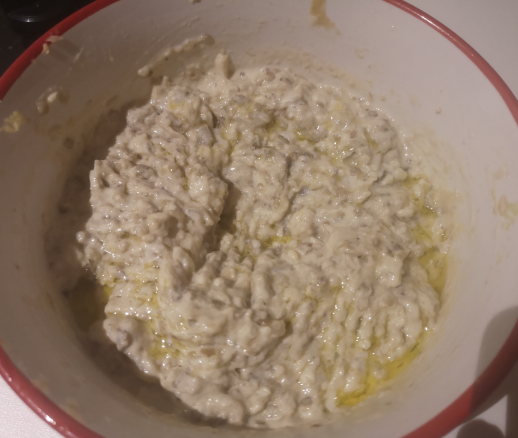Reading a bit of old news about One-Time-Passwords attacks (link1 and link2) I realized that there is no much awareness in companies about this danger. Most people assume that having 2FA means the perfect security system. But it seems it is not and we have to be still even more vigilant. Trust is earned not deserved. So we need a bit of common sense practices spread around this topci. I liked the explanation about the link used for attacking coinbase and how slick was the method of using a subdomain that in a mobile screen only shows the small part and tricks you.
Prince of Persia
A couple of months ago I was reading about how the game DOOM was ported to a product from a CDN company. I remember I played a bit and brought back good memories when I was playing DOOM2. Even the code was published in github. Somehow I clicked to the book about DOOM and found about a book about Prince of Persia. I bought both at the end.
The book about POP was quick to read. It is “just” the journals of the author across some years. It is interesting how much has changed the industry since late 80s. He though the gaming industry wasn’t going to last long. 30 years later we have even “e-sports”! I didnt know he wrote the whole game. I assumed this kind of projects were managed by big teams. But those times, things were simpler and a good hacker could do those things. And he was super young! And before that he wrote the game “Karateka” that I dont remember. Anyway, Prince of Persia was one of my favourite games! And now you can still play online. I think I played a bit the second part but that was it. I always kept loyal to the first part. As a journal you can read the struggles of the person. He wanted to make movies but then the gaming thing was always calling him. I think it is quite interesting what he did as he was travelling, writing scripts and then video games in the late 80s and 90s.
Use ZFS
As part of my reinstallation, I had to create a ZFS partition that I used to use for personal storage. Debian Installation process doesnt provide this option, so I have to do it manually. To be honest, it is good to remember/refresh these “basic” things, you never know when you are going to need them (urgently very likely).
As the installation process gave most of the space to the “home” partition, that’s the one I need to take space for creating my ZFS partition. I chose LVM during installation so I dont really have to deal with physical partition, it is mainly logical volumes aka “lv”.
So I rebooted in single-mode as I wanted to be sure that I didnt damage anything and I had to umount the “home” lv. So as root:
Check mounted partitions # df -hT Checks LV summary # lvs Umount /home # umount /home/ Check "home" is not munted # df -hT Check VolgumeGroup summary # vgs Perform filesystem check before making any change # e2fsck -fy /dev/mapper/athens--vg-home Resize filesystem to 22G # resize2fs /dev/mapper/athens--vg-home 22G Check LV hasnt changed # lvs Reduce LV for home to 22G # lvreduce -L 22G /dev/mapper/athens--vg-home Check LV home is reduced # lvs LV VG Attr LSize Pool Origin Data% Meta% Move Log Cpy%Sync Convert home athens-vg -wi-ao---- 22.00g root athens-vg -wi-ao---- <27.94g swap_1 athens-vg -wi-ao---- 976.00m # Check you have free space in the VG # vgs VG #PV #LV #SN Attr VSize VFree athens-vg 1 3 0 wz--n- 237.48g <186.59g # Reboot to be sure everything is fine # reboot Check all partitions are mounted and "home" is just 22G $ df -hT Filesystem Type Size Used Avail Use% Mounted on udev devtmpfs 3.9G 0 3.9G 0% /dev tmpfs tmpfs 786M 1.6M 785M 1% /run /dev/mapper/athens--vg-root ext4 28G 6.7G 20G 26% / tmpfs tmpfs 3.9G 87M 3.8G 3% /dev/shm tmpfs tmpfs 5.0M 8.0K 5.0M 1% /run/lock /dev/sda2 ext2 456M 72M 360M 17% /boot /dev/mapper/athens--vg-home ext4 21G 3.0G 17G 16% /home /dev/sda1 vfat 496M 64M 433M 13% /boot/efi tmpfs tmpfs 786M 40K 786M 1% /run/user/1000 $ Create new LV "storage" using the spare space in the VG # lvcreate -L 186G -n storage athens-vg Logical volume "storage" created. # Check VG space has reduced # vgs VG #PV #LV #SN Attr VSize VFree athens-vg 1 4 0 wz--n- 237.48g 604.00m # Check we have a new LV storage of 186G # lvs LV VG Attr LSize Pool Origin Data% Meta% Move Log Cpy%Sync Convert home athens-vg -wi-ao---- 22.00g root athens-vg -wi-ao---- <27.94g storage athens-vg -wi-a----- 186.00g swap_1 athens-vg -wi-ao---- 976.00m # Create our Zpool storage using the LV storage. # zpool create storage /dev/mapper/athens--vg-storage Check Zpool status # zpool status pool: storage state: ONLINE config: NAME STATE READ WRITE CKSUM storage ONLINE 0 0 0 athens--vg-storage ONLINE 0 0 0 errors: No known data errors # Check mount point for ZFS pool # zfs get mountpoint storage NAME PROPERTY VALUE SOURCE storage mountpoint /storage default # Change Zpool storage mount point to a point in my home dir # zfs set mountpoint=/home/tomas/storage storage Check ZFS list # zfs list NAME USED AVAIL REFER MOUNTPOINT storage 165K 179G 24K /home/yo/storage # Check all partitions $ df -hT Filesystem Type Size Used Avail Use% Mounted on udev devtmpfs 3.9G 0 3.9G 0% /dev tmpfs tmpfs 786M 1.6M 785M 1% /run /dev/mapper/athens--vg-root ext4 28G 6.7G 20G 26% / tmpfs tmpfs 3.9G 87M 3.8G 3% /dev/shm tmpfs tmpfs 5.0M 8.0K 5.0M 1% /run/lock /dev/sda2 ext2 456M 72M 360M 17% /boot /dev/mapper/athens--vg-home ext4 21G 3.0G 17G 16% /home /dev/sda1 vfat 496M 64M 433M 13% /boot/efi tmpfs tmpfs 786M 40K 786M 1% /run/user/1000 storage zfs 180G 128K 180G 1% /home/y/storage $
I have used these links to refresh myself:
- lvs resize: https://www.rootusers.com/lvm-resize-how-to-decrease-an-lvm-partition/
- create lv: https://www.thegeekstuff.com/2010/08/how-to-create-lvm/
- create zfs pool: https://ubuntu.com/tutorials/setup-zfs-storage-pool#3-creating-a-zfs-pool
- change zfs mount point: https://docs.oracle.com/cd/E19253-01/819-5461/gaztn/index.html
To be honest, I thought I was going to struggle much more but it has been quick.
Step by step getting back to my normal environment (and trying to improve it). I said it before, I should be able to reinstall my laptop easily, like a production server….
mutt+gmail
Using mutt for sending emails via my gmail account has been something I wanted to do for a long time. After my last issue with my laptop, finally I decided to learn how to do it.
Thanks to these blogs I managed to get it working!!!
For the main setup, this link and this. For overcoming the authentication issue, this link. So you define a new password for an app in your google account as I use 2FA.
sudo aptitude install mutt
mkdir ~/.mutt
vim ~/.mutt/muttrcThis is the content of my file:
set from = "youremail@gmail.com"
set realname = "Name Surname"
# IMAP settings
set imap_user = "youremail@gmail.com"
set imap_pass = "your_new_app_password"
# SMTP settings
set smtp_url = "smtps://youremail@smtp.gmail.com"
set smtp_pass = "your_new_app_password"
# Remote Gmail folders
set folder = "imaps://imap.gmail.com/"
set spoolfile = "+INBOX"
set postponed = "+[Gmail]/Drafts"
set trash = "+[Gmail]/Trash"
# Composition
set editor = "vim"
set edit_headers = yes
set charset = UTF-8This is the error I had before getting the app password:
$ echo "Example mutt+gmail" | mutt -s "Testing mutt+gmail" youremail@gmail.com -a test.txt
SASL authentication failed
Could not send the message.
$ After that. Email sent fine without error and I can see it in my inbox!
$ echo "Example mutt+gmail v2" | mutt -s "Testing mutt+gmail v2" youremail@gmail.com -a books.ods
$ The only thing I dont like is I need to have a password in a text file….
So let’s use chmod so, at least, only me can read the file.
~/.mutt$ chmod og-r muttrc
~/.mutt$ ls -ltr
total 4
-rw------- 1 yy yy 687 Oct 26 23:22 muttrc
~/.mutt$ Although, Ideally, I would prefer to use a certificate that is only valid for gmail, but I haven’t been able to find anything related to this.
Reinstalling Debian
Two weeks ago I started having an issue regarding “duplicate file trigger” with some packages related to gtk-2.0 when I was doing my routine “aptitude update/ dist-upgrade”. I use Debian Testing and I have seen in the past weird things with packages but then got fixed. I understand I am in “testing” so these things may happen. Somehow, I tried to take a look If I could understand the problem and fix it. Searching didnt give much info. I found quite old entries about the issue but nothing really clarifying why I ended there. I assume that I am not the only one having these problems in the Debian community so it should be “easier” to find info from more experience people than me. But most of the cases, I rely on old data.
Somehow I “fixed” that issue but I didnt dig enough to understand what it is this thing about “triggers”. So I messed around with “/var/lib/dpkg/triggers/File” but I did a rookie mistake. I didnt do a backup of the file…. (how difficult is to type “cp File File-backup”). I remember that I had to remove several entries and they related to i386 architecture….
Well, then after a couple of days, I had a different issue. Not sure if this was triggered by my “triggers fix”.
Somehow I had some packages failing to install due to missing dependencies. It was mainly related to “python3”. So last Saturday I decided to go deep into it… And I made things worse. When you “aptitude purge” a package, you know the package and dependencies will be removed (if they are not used). While I was trying to solve my “death by dependencies” I deleted many packages that I was sure I needed. Again, I should have stopped or at least take notes of all those packages. At the end, I ended with “just” one issue. I couldnt install python3…. no idea why. In this path of destruction, I removed most of my X11 setup, so no graphic UI for me… But I didnt notice until too late. I tried to reinstall as many packages as possible and still python3 was failing. I have pyenv and I have used python3 so not sure why/how was broken. I reached a point that with so many changes, I had to reboot…. It is not the first time and after spending hours trying to fix something, that you are sure it is fixed, is still not fixed, then your reboot, and it is fixed. So I risked it, I knew that this would be fixed or would blow up big time. The later happened. And again, rookie mistake, I should have refreshed my hard drive backup, just in case you can’t access the laptop. But as my SSD looked healthy, the thought didnt cross my mind…
Reboot, got me stuck in “lightdm can’t start”….. and I couldnt login…. I was impatient. As later I learnt, I should wait a bit (long) for a time out and I would have seen my prompth.
I tried to get into rescue mode / single-user mode, and had to get by root. So I had a bit of access and I tried to run aptitude again…. I didnt have Internet access. Something I give for granted, when you login into your graphic UI, you have your nice network-manager that logs into your wifi. I always thought I was something simple like when you log into wired Internet access… I was totally wrong.
I was lucky that I had Internet in my mobile phone and that helped me a lot to move forwards with each issue. Without that, I would be still writing on paper.
So after a bit of struggling, I learned how to connect to a wifi via CLI. Some I was quite happy with that. I used this link. Thanks to the author!
1) Find out the wireless device name.
# iw dev
phy#0
Unnamed/non-netdev interface
wdev 0x5
addr 60:57:18:00:9d:8a
type P2P-device
txpower 0.00 dBm
Interface wlp2s0
ifindex 2
.....
2) Check status of wireless interface.
# ip link show wlp2s0
2: wlp2s0: (BROADCAST,MULTICAST) mtu 1500 qdisc noop state DOWN mode DEFAULT qlen 1000
link/ether aa:aa:aa:aa:aa:aa brd ff:ff:ff:ff:ff:ff
3) Bring up interface if you dont see "UP"
# sudo ip link set wlp2s0 up
# ip link show wlp2s0
2: wlp2s0: (NO-CARRIER,BROADCAST,MULTICAST,UP) mtu 1500 qdisc mq state DOWN mode DEFAULT qlen 1000
link/ether aa:aa:aa:aa:aa:aa brd ff:ff:ff:ff:ff:ff
4) Check the connection status.
# iw wlp2s0 link
Not connected.
5) Scan to find your local wifi. You need to search for the SSID that you want to connect. This can be a long sentence...
# iw wlp2s0 scan
....
BSS bb:bb:bb:bb:bb:bb(on wlp2s0) -- associated
last seen: 136826.740s [boottime]
TSF: 10582137299 usec (0d, 02:56:22)
freq: 5620
beacon interval: 100 TUs
capability: ESS Privacy SpectrumMgmt APSD (0x0911)
signal: -76.00 dBm
last seen: 12 ms ago
Information elements from Probe Response frame:
SSID: ZZZZZZ PROVIDER SPEED PRODUCT 10Ghz
Supported rates: 6.0* 9.0 12.0* 18.0 24.0* 36.0 48.0 54.0
DS Parameter set: channel 124
HT capabilities:
Capabilities: 0x0f
RX LDPC
HT20/HT40
SM Power Save disabled
No RX STBC
Max AMSDU length: 3839 bytes
No DSSS/CCK HT40
Maximum RX AMPDU length 65535 bytes (exponent: 0x003)
Minimum RX AMPDU time spacing: 4 usec (0x05)
HT RX MCS rate indexes supported: 0-15, 32
HT TX MCS rate indexes are undefined
HT operation:
* primary channel: 124
* secondary channel offset: above
* STA channel width: any
* RIFS: 0
* HT protection: no
* non-GF present: 1
* OBSS non-GF present: 0
* dual beacon: 0
* dual CTS protection: 0
* STBC beacon: 0
* L-SIG TXOP Prot: 0
* PCO active: 0
* PCO phase: 0
RSN: * Version: 1
* Group cipher: CCMP
* Pairwise ciphers: CCMP
* Authentication suites: PSK
* Capabilities: 1-PTKSA-RC 1-GTKSA-RC (0x0000)
......
WPS: * Version: 1.0
* Wi-Fi Protected Setup State: 2 (Configured)
* Response Type: 3 (AP)
* UUID: bc329e00-1dd8-11b2-8601-38549b39bdd4
* Manufacturer: ABCD
* Model: ABCD GateWay
* Model Number: V1.0
* Serial Number: 12345678
* Primary Device Type: ABABABAB
* Device name: ABCD AP
* Config methods: PBC, Keypad
* RF Bands: 0x2
* Version2: 2.0
.....
As the blog mentions, the two important things here are SSID and RSN/WPS. I dont think it is common these days to find WEP Wifi. Connecting to a WEP it is far much easier.
6) Connect to WPA/WPA2 WiFi network: Generate wpa_supplicant config file
Generate a configuration file for wpa_supplicant that contains the pre-shared key ("passphrase") for the WiFi network.
# wpa_passphrase "ZZZZZZ PROVIDER SPEED PRODUCT 10Ghz" >> /etc/wpa_supplicant.conf
...type in the passphrase and hit enter...
wpa_passphrase takes the SSID as the single argument. You must type in the passphrase for the WiFi network after you run the command. Using that information, wpa_passphrase will output the necessary configuration statements to the standard output. Those statements are appended to the wpa_supplicant configuration file located at /etc/wpa_supplicant.conf.
# cat /etc/wpa_supplicant.conf
# reading passphrase from stdin
network=
ssid="ZZZZZZ PROVIDER SPEED PRODUCT 10Ghz"
#psk="mytest123"
psk=aaaaaasuperlongkeybbbbbbbbbbbbbbbbbbb
}
7) Connect using wpa_supplicant config file.
# sudo wpa_supplicant -B -D wext -i wlp2s0 -c /etc/wpa_supplicant.conf
-B means run wpa_supplicant in the background.
-D specifies the wireless driver. wext is the generic driver.
-c specifies the path for the configuration file.
8) Verify you are attached to your Wifi SSID
# iw wlp2s0 link
Connected to bb:bb:bb:bb:bb:bb (on wlp2s0)
SSID: ZZZZZZ PROVIDER SPEED PRODUCT 10Ghz
freq: 2412
RX: 63825 bytes (471 packets)
TX: 1344 bytes (12 packets)
signal: -27 dBm
tx bitrate: 6.5 MBit/s MCS 0
bss flags: short-slot-time
dtim period: 0
beacon int: 100
9) Obtain IP address by DHCP and verify IP
# dhclient wlp2s0
#
# ip addr show wlp2s0
2: wlp2s0: mtu 1500 qdisc mq state UP qlen 1000
link/ether aa:aa:aa:aa:aa:aa brd ff:ff:ff:ff:ff:ff
inet 192.168.1.3/24 brd 192.168.1.255 scope global wlp2s0
inet6 zzz/64 scope link
valid_lft forever preferred_lft forever
10) Check routing / Add default if needed:
# ip route show
192.168.1.0/24 dev wlp2s0 proto kernel scope link src 192.168.1.3
The above routing table contains only 1 rule which redirects all traffic destined for the local subnet (192.168.1.x) to the wlp2s0 interface. You may want to add a default routing rule to pass all other traffic through wlp2s0 as well.
# ip route add default via 192.168.1.254 dev wlp2s0
# ip route show
default via 192.168.1.254 dev wlp2s0
192.168.1.0/24 dev wlp2s0 proto kernel scope link src 192.168.1.3
11) Check external connecitivity
# ping 8.8.8.8
After being able to get Internet access I carried on troubleshooting. I was stuck with python3 issue and now ligthdm not starting up… Using this link, I could see lightdm was complaining about an issue with Xorg. So then I checked the logs of Xorg.
[ 34.050] (II) LoadModule: "glx"
[ 34.050] (II) Loading /usr/lib/xorg/modules/extensions/libglx.so
[ 34.050] (EE) Failed to load /usr/lib/xorg/modules/extensions/libglx.so: libGL.so.1: cannot open shared object file: No such file or directory
[ 34.050] (EE) Failed to load module "glx" (loader failed, 0)
I searched for info about that error. I followed several pages like this and this, I installed an reinstalled the packages mentioned, but not way could fix that “glx”.
After sometime, I decided to work on the “python3” issue. I tried to follow some advice like this. Again I tried to purge as many packets as I could and reinstall everything python related. Same result, I couldn’t install python3. And weird enough, my wifi used to be disconnected whenever removed python so I had reboot and attach to the wifi a couple of times. And as well, I managed to “lock” my wifi card too, so bizarre!!! I think I followed something from here to unlock.
So I reached a point where I was totally stuck. I couldnt fix the Xorg issue and turn up the graphic desktop environment and python3 was very broken. I decided to reinstall, I was getting nowhere. I made full backup of my homedir and most of the system folders and take some logs about the current config of my system and packages currently installed so I could help me to setup the new environment quicker.
So I downloaded a netinstall iso for Debian testing. Thanks to my mobile, I managed to find the link and I “wget” it via my cli. Then I needed to install that iso in a USB so the Debian documentation was quite easy…
# cp debian-testing-amd64-netinst.iso /dev/sdb1
# syncOk, it was time to boot up the usb and resintall…. not that easy…. my laptop was not able to see the usb at boot time….. I checked the BIOS and USB was allowed as boot device…. Back to the shell, I could mount the USB, fdisk showed the partition had the flag enabled for booting.
I decided to find another method. I was pretty sure that in the past when creating a boot USB I had to use “dd”… so following this link:
# dd if=debian-testing-amd64-netinst.iso of=/dev/sdb1 bs=4M conv=fdatasync status=progressThe I tried to boot again, and worked!!!
So started the reinstall process. I chose to use the whole disk and the trigger a process to overwrite my whole disk…. I had to leave the laptop overnight because the process was superslow! I didnt know how to skip it….
Something I still haven’t learned is how to scroll up/down in the tty !!! During the whole troubleshooting time, it was quite frustrating because using “less” didnt work always with all my commands… I tried to find some answers like this but no joy.
Next night I follow up. Obviously the installation process didnt detect my wifi card (non-free drivers my love) and I dont have a RJ45 port… so I had to use my usb-rj45 adaptor and long rj45 cable to get back to the internet and complete the installation…
Once the process finished, you end up with a very basic system… no wifi, no Xorg, just pure CLI environment.
So started trying to install some packages I use more often and get my wifi card detected and working. As I had my backup, I could update my apt/sources.list file and get the repositories I needed.
104 vim /etc/apt/sources.list
105 aptitude update
106 aptitude dist-upgrade
108 aptitude install firmware-iwlwifi
109 lsmod | grep iw
110 iw list
116 reboot
I installed “lightdm” as my display manager. I finally managed to see it again! I logged in and nothing happend. I forgot to install my lightweith desktop environment… lxde.
So finally, I was back to my graphic environment. But again I forgot to install the network-manager to get my Internet connectivity sorted as I was using the CLI technique before.
One final issue was the sound card, I could see videos online but didnt have sound so I was pretty sure I was missing something again, “alsa-utils” and then with “pavucontrol” I noticed the output devices were muted.
So finally got basic functionality. I haven’t moved all my data yet as I need to create my ZFS partition so I will need a bit more tinkering in the coming days.
This is the list of installed packages so far:
aptitude install lightdm
aptitude install sudo
aptitude install gedit
aptitude install tcpdump
aptitude install nmap
aptitude install terminator
aptitude install gkrellm
aptitude install keepass2
aptitude install firefox-esr
aptitude install vagrant
aptitude install mutt
aptitude install screen
aptitude install tmux
aptitude install wpasupplicant
aptitude install iw
aptitude install minicom
aptitude install lxde
aptitude install pavucontrol
aptitude install libreoffice
aptitude install lstopo
aptitude install apt-file
aptitude install hwloc
aptitude install parted
aptitude install ristretto
aptitude install network-manager-gnome
aptitude install net-tools
aptitude install vim
aptitude install git
aptitude install tig
aptitude install firmware-iwlwifi
aptitude install qemu
aptitude install alsa-tools-gui
aptitude install alsa-utils
aptitude install brightnessctl
aptitude install zfs-dkms
aptitude install gkrellm-volume Things I want to learn:
- How to setup a “timeshift” (like Apple) for backup in Debian
- How to scroll in linux terminal tty
- Send emails with mutt using gmail (and with attachments) so I dont need GUI.
Things I need to setup
- Have a USB ready with a Debian Testing ISO
- How to backup my Android mobile phone and erase contents if I lose it.
- Ideally I should rebuild my laptop more frequently so I should have a PXE-like process. Maybe having some kind of manifest in my git repo. Maybe I overthinking it.
Lime Pie
I have tried this pie… twice.. and failed miserably… twice.
This is the typical random video I watch and then I add it to my to-cook list.
Somehow I went for this version as I didnt want to use condensed milk as I thought it was going to be too sweet. I didnt do any meringue or used macha tea.
My first attempt was bad for a couple of reasons. The coconut milk I used was “light” (low in fat) and at the end, the cake tasted like acid (due to the lime) water. And second, I didnt put enough biscuits for the base. And the biscuits were ginger nuts so I added extra spiciness to the taste 🙂

I decided to give it a new go, using full fat coconut milk and plenty of (ginger) nuts. To be honest, it still tastes a bit bland. Shall I add more limes (but will add more acidity?), shall I add more sugar (too sweet then)? Not sure.

I think, I will try the “classic” version next time, with homemade condensed milk.
Dune2: Messiah
I am just following the Dune series as I liked the first book quite a lot. The second one is obviously a continuation of the first one. It is a new thriller about Paul’s future, his religion/empire, his love, his thoughts, his doubts, his fears, etc. The struggle of which future will turn up. It is again interesting all the mixing of religion/politics. Yes, it is fiction, but somehow feels contemporary. I like the new elements of conspiracy, new baddest enemies, etc.
Looking forwards for the next book.
Baba Ghanoush
I tried some time ago Baba Ghanoush while having lunch with friends and I liked, it was a nobility for me as I could try something else apart from Humus. So sometimes I have mixed grilled aubergines with chickpeas and it produces a bit smoky (and darker) humus. But two weeks ago, I tried again from a different place and I was really shocked, it was so different, so tangy. I decided to find a good recipe and try at home. So I found this video:
Ingredients:
- 2 Aubergines (roasted)
- 1 tsp chopped or grated garlic
- 4-5 tbsp of Tahini
- 1/2 Lemon juice
- 1 tsp salt
- 2 tbsp Yogurt
- Olive oil
- Pomegranate (optional)
Process:
- Two ways for roasting the aubergines. One, stab the aubergines with a knife and wrap in foil. Bake in oven for 40m at 175C. Second, halve the aubergines, spread a bit of oil and bake in oven for 40m at 175C, but check they dont burn! I did the second method but I will try the first one too.
- Take the aubergines from the oven, scoop the meat and with a knife, chop it as much as you can. I think this is very important. I didnt you the food processor at all.
- Then put the chopped/grilled aubergines in a bowl and add all other ingredients. Mix well.
- You can server as it is or add a bit of pomegranate seeds and olive oil. I only added olive oil
When I tried, I was impressed, it was like the one I tried! I guess the yogurt and lemon are key! Congrats to the chef in the video!
Very easy recipe and super tasty!!!

BiDir + SR4
This week at work I have to deal with a couple of physical connections that were new for me. I am more familiar with LC connector and MTP is still something I am dealing with. So I learned about BiDir optics (LC) something never heard about it and the difference with SR4 optics (MTP). The vantage of using BiDir is that you can keep your current fiber install in place and upgrade from 10G to 40G without extra cost. But with SR4 you need to deploy MTP/MTO cabling although you can do breakouts (40G to4x10G or 100G to 4x25G). This is the blog entry I found quite useful for comparing both types. And this one just for BiDir.
As well, somewhere I read (can’t find the link), SR4 are more common than BiDir because is BiDir is proprietary so it has compatibility issues
This is a good link about cables and connectors.
Ginger Nuts + Corn
A couple of weeks ago I had to use ginger nuts cookies for a recipe. So now I wanted to make my own, because after eating a cookie you will feel alright.
So searching a bit, a decided to try this version:
Ingredients (10 cookies of decent size)
- 200g self-raising flour
- 2 tsp bicarbonate of soda
- 4-5 tsp ground ginger (if you want a bit more, they will more fiery!)
- 80g caster sugar
- 100g melted butter
- 4 tbsp golden syrup (or honey)
Process
- Preheat oven around 190C. Line one baking tray with nonstick baking paper
- Sieve flour, bicarbonate and ginger in a bow. Then add the sugar
- Make a well in the center of the bowl, add the melted butter and syrup. Stir until combine. In my case, the dough was a bit crumbly. Maybe needs a bit more butter?
- From the dough, take pieces and form roughly a ball, then flat it and put it in the tray. It looks delicate but it is fine.
- Bake for 10-12 MAX! I did 10 minutes. Just slight golden and with cracks on top.
- Remove from oven and let it cool down in a rack if you have. If you touch them they feel soft and not baked, but let it be. Once they cool down, they will firm up!.
It is a quick recipe, the result was tasty!

NOTE: Somehow, after so many years I noticed that tsp = tea spoon (small) and tbsp = table spoon (big)!!! I think I have always used the same measure /o\ Well, still got most things right anyway 🙂
As well, somehow, I bought this week a package with two corns on the cob and baked them in the oven.
Ingredients
- A couple of corn on the cob pieces + foil to wrap
- a bit of butter
Process
- Preheat oven at 200C
- Clean with water the corn cobs and wrap it in foil (dont leave any part without cover)
- Bake for 40 minutes
- Remove from oven, remove foil (you can reuse it) carefully, put a bit of butter (it will melt). Wait a bit and then you can eat it directly or remove the kernels with a knife.

I was really amaze with the flavour! Somehow I felt like eating corn flakes with milk! And actually, I took a gulp of milk after eat.
I want to try more often and using a fresh corn cob.